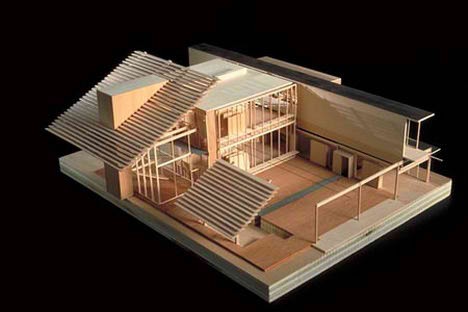This is the first installment of a series of posts on my most commonly-used mental models. Before we can sink our teeth into the topic itself, I would like to answer some questions that I might have triggered in you:
- What is a mental model?
- Why should we care about mental models?
It's good that we are defining "mental models" here today; because it has been a concept that I have used repeatedly, and expect to continue to rely on, for much thinking I do about my work and life.
What is a model? When I asked Google image search, it came up with:
If you are among my target readers, I am expecting a mental image more attuned to these ;)
What these images share in common, is that they are a representation of something else, for which they have captured their essence for a particular usage:
- A "typical" woman's bodily dimensions, for displaying new fashion
- A (perhaps not-yet-existing) building's structure and layout, for exhibiting architectural design
- A vehicle's forms and internal structure, for visualizing design and perhaps simulating performance
- A rabbit's external form, for… very crude animation effects?
However, these very models are utterly useless when it comes to some other uses:
- Looking at a runway model will probably not help you understand postnatal depression in women
- Building a small-scale representation of a building complex in wood will not inform you of the actual building's resistance to fire
- Running various experiments with a single simulated vehicle will not help us to study traffic congestion
- Watching a roughly bunny shaped object prancing on a screen will not fill that rabbit-shaped hole in your heart left there by the passing of your old pet
So my personal definition of a model is that it's always a simplification, and sometimes an abstraction of a particular entity, system or process, that helps us to understand one aspect of that very entity, system or process. From here, it flows that the same entity, system, or process can be represented by multiple models, depending on the particular application we have in mind. A mental model, in addition to being a simplification of "the real thing", is necessarily an abstraction, because it only exists in our mind, or perhaps on paper and LCD screens as inked lines and pixels. It is a purely symbolic undertaking, where the tools of choice are languages and mathematics.
“Essentially, all models are wrong, but some are useful.”
Personally, I find that being familiar with different mental models allows me to hold different, even contradicting, views of the same issues. That has made me more accepting of myself and others, a more understanding human being. Because when a complex situation arises, I am aware of the different interpretations of the same event, and the possible reactions. Knowing the options is the first step to making a good choice. More judgement is required then to tell which reaction best fits the given situation. I understand this to be the basis of prudence, an oft-forgotten virtue that derives from the Latin prudentia meaning "foresight, sagacity". It is the ability "to judge between virtuous and vicious actions, not only in a general sense, but with regard to appropriate actions at a given time and place" (Source: Wikipedia). Sometimes, in counselling my friends, they even call me wise. I hope I do not fail them.
In my professional pursuit, I value the unifying power of mental models, which can transfer insights gathered in one industry, or discipline, to another. This is particularly valuable if we do not have the luxury of starting from scratch every single time.
A silly example would be like this: my mental model of a door allows me to effectively use various forms of doors, even those that I have never seen before in my life. Because I know that they are used to grant/deny access to inside/outside space, and they can probably be locked. There, I don't need to stare at the metallic/wooden/plastic/alien-material-looking object placed at the entrance of an enclosed space, and spend time touching, sniffing and knocking on it. Finding out how to lock/unlock them, is another matter… (It took me many hours of practice to be functional with respect to English doors.)
More serious examples also exist. For example: once we are introduced to the principle of stock and flow, we can apply it to a number of problems, from understanding the causes of obesity in the United States, or the origins of money, to evaluating climate-change mitigation policies. I will show you how.
On the menu for the following weeks:
- Stocks and flows
- System archetypes: feedback loops
- All Quadrants All Levels (AQAL)
- Models of personality
- Models of culture
- Individual decision-making
- Collective decision-making
- TBD



